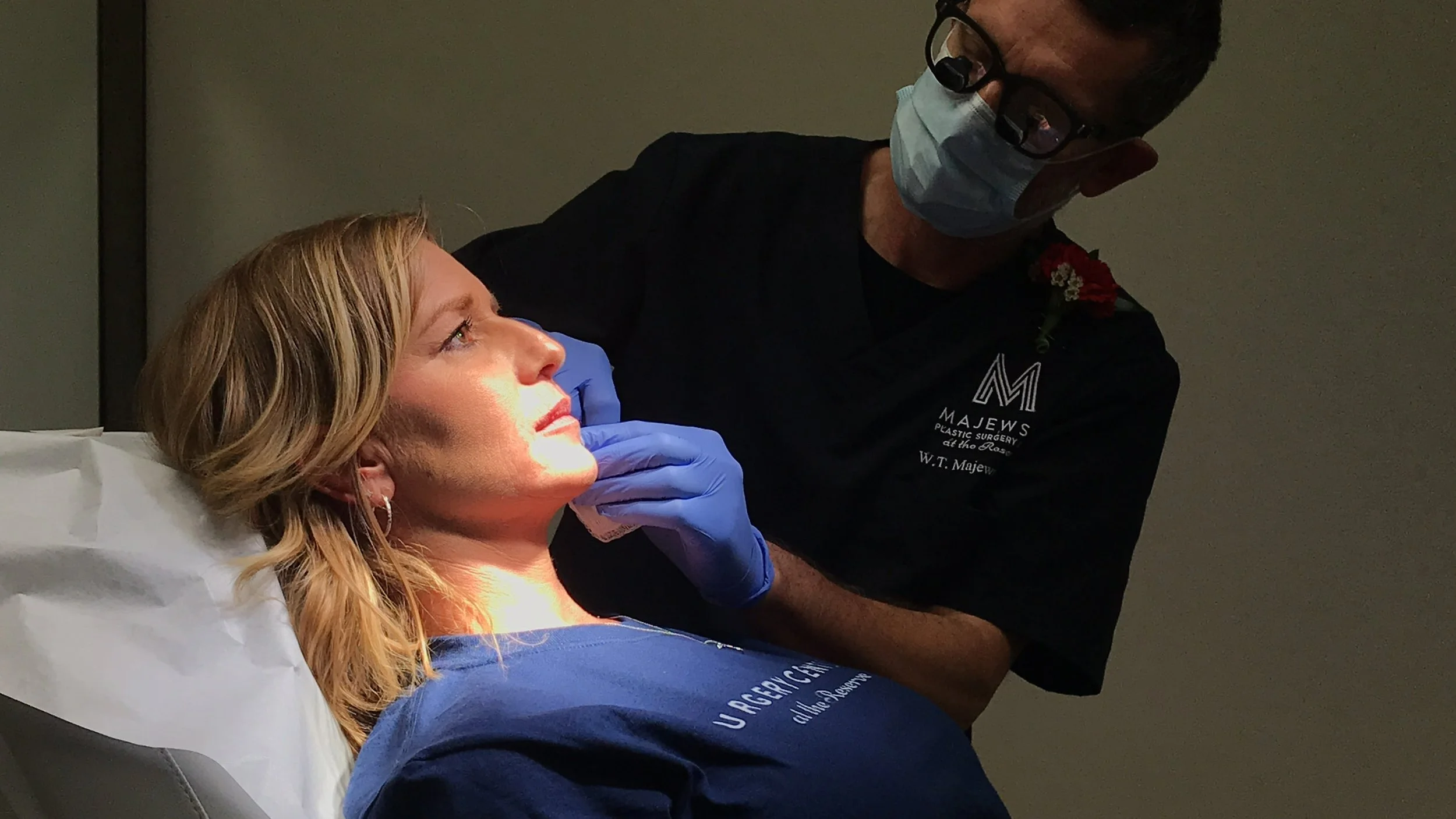Not sure which of these anti-aging products is right for you? Learn more by reading answers to these frequently asked questions about Botox®, Dysport®, and fillers. Then, schedule a consultation with Dr. Majewski to create a treatment plan that meets your needs!
Q: WHAT’S THE DIFFERENCE BETWEEN BOTOX AND DERMAL FILLERS?
The primary difference between the two is that Botox® (or Dysport® - they are very similar) reduces the activity of muscles in the face that cause wrinkles. Dermal fillers, however, provide volume that fills the trouble areas. They also stimulate collagen growth in the face as well as plump and lift the skin to replace collagen loss.
The important things to consider when choosing between Botox®/Dysport® and facial fillers is what kind of wrinkles you want to get rid of and how. Botox® is the better choice for dynamic wrinkles (especially around your eyes) as it will reduce their motion and visibility. These wrinkles occur when the face is in motion or making an expression. They are usually positioned in the forehead and around the eyes (“crow’s feet”).
Fillers are ideal for static wrinkles, the ones that are still visible even when your face is relaxed. These areas are depleted and sunken in and will benefit from the fullness that facial fillers give them. Fillers will decrease the appearance of permanent lines that are in the skin (even if they are result of repetitive muscle contracture, like “smoker’s lines” around the mouth).
Some options -- like Sculptra® -- have the added benefit of stimulating collagen production, creating lasting fullness over a longer period of time.
Q: WHERE CAN YOU USE DERMAL FILLERS? ARE THEY THE SAME THING AS LIP FILLERS?
Usually, Botox® is used on the top third of the face, whereas fillers can be used all over the facial area, including the lips. We carry the Restylane® family of fillers which are excellent for lip fillers.
Q: WHAT DIFFERENTIATES EACH OF THE FILLERS YOU OFFER?
We predominantly use the Restylane® family of fillers. The main ingredient in all of them is hyaluronic acid (HA) - a substance naturally occurring in our bodies. The Restylane® fillers differ mostly in viscosity (i.e. how “liquid” or how “thick” they are). “Thinner” products are better for superficial lines, whereas “thicker” fillers are better for increasing volume. Here is a little more information about the differences between these products:
Restylane Silk®: best for lips and lines around the mouth
Restylane-L®: great product “in-between, not too soft, not too “sticky” - variety of applications
Restylane Lyft® - excellent volumizer (often used for adding fullness to cheeks)
Restylane Defyne® and Refyne®: new products that are compressible, i.e. give natural appearance to areas that move (less visible under the skin with animation).
Sculptra® (poly-L-lactic acid): This product helps to increase lost volume of the cheeks, around the mouth, etc., and is typically injected in three (sometimes more) sessions in one month intervals. Sculptra stimulates production of collagen and helps to create collagen deposits around the microscopic granules of the product, further increasing volume over time. The effects of this product are most apparent about 6 months after the injection and may last up to 2 years.
Q: HOW LONG DO FILLERS LAST? HOW LONG DOES BOTOX LAST?
Depending on the area treated, amount injected, problem treated - these products typically last a few months (less in the more mobile lower face, more in the upper face).
Most fillers last between 6-9 months, though some (like Sculptra®, mentioned above) can last up to 2 years. Botox® and Dysport® typically lasts between 3-4 months, sometimes longer.
Q: HOW MUCH DOES IT COST TO GET BOTOX? FILLERS?
You can see our current pricing on our Spa Menu.
Q: WHO PERFORMS INJECTIONS IN YOUR OFFICE?
All injections are done by Dr. W. Tomasz Majewski, a Board certified plastic surgeon with over 17 years of experience.
Any other questions about Botox® or fillers?
Share them below! ❤️


